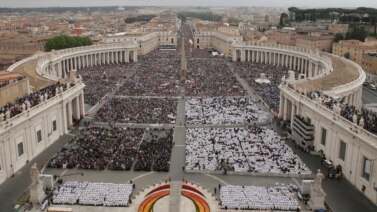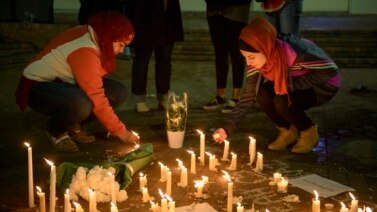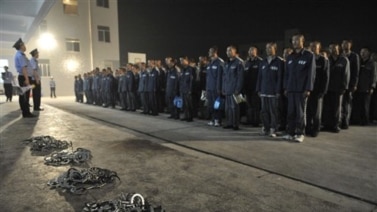The documents known as the Dead Sea Scrolls were uncovered in the mid-20th century. They still have things to tell us about life and religious beliefs in ancient Israel. An exhibit in Los Angeles shows how modern science is bringing the history of these ancient documents to life.
The exhibit of the scrolls is at the California Science Center until September 2015. It is the largest exhibit of the scrolls ever seen outside Israel.
Visitors learn that the scrolls are ancient documents. During the first century, they were hidden in caves in the modern-day West Bank. At that time, they needed protection from Roman troops coming to fight against Jewish rebels.
The scrolls were written over hundreds of years. They show the mixture of cultures in ancient Israel. Various Jewish religious groups lived together there with early Christians.
David Siegel is the Consul General for Israel in Los Angeles. His office helped bring the exhibit to the city. Mr. Siegel says the documents include religious writings and Biblical texts. These texts are important to three faiths.
“When that shepherd in 1947 entered that cave and found these parchments, what he discovered were the earliest known manuscripts of the Bible. So they're significant obviously to Jews, but they're also significant to Christians and they're significant to Muslims."
Diane Perlov is Executive Director for Exhibits at the California Science Center. She says scientists studied the manuscripts using modern techniques. They pieced together thousands of pieces of parchment and papyrus into hundreds of documents. She says they used different kinds of light to read hidden texts, and tested the material for dating.
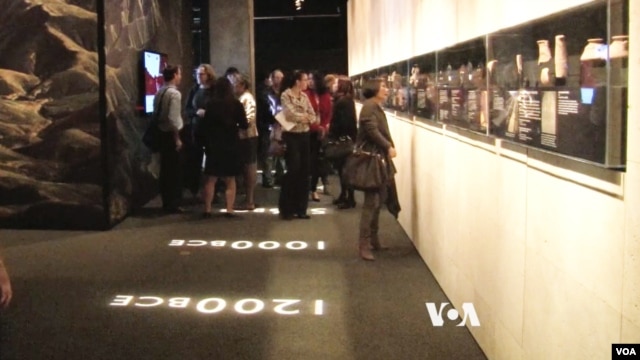
“Scientists used multi-spectral imaging, carbon 14 dating, DNA analysis and other tools to match up all these individual pieces to the same scroll, to read them.”
There are 20 Dead Sea Scrolls on display in the exhibit. Visitors can also see royal and ritual objects and items from daily life that span 1,200 years. They include a small figure that might be Asherah. She was the mother goddess whom people worshipped in many areas of the ancient Near East.
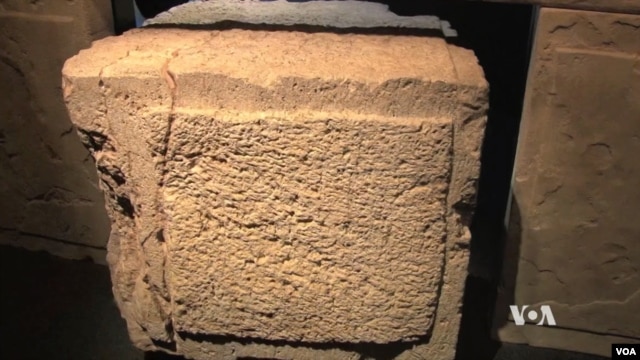
The exhibit includes coins, pottery, and a three-ton stone from the Western Wall. The Western Wall was part of the second Jewish temple that invading Romans destroyed in the year 70. The objects show the range of cultures - Jewish, Greek and Roman - that sometimes led to conflicts.
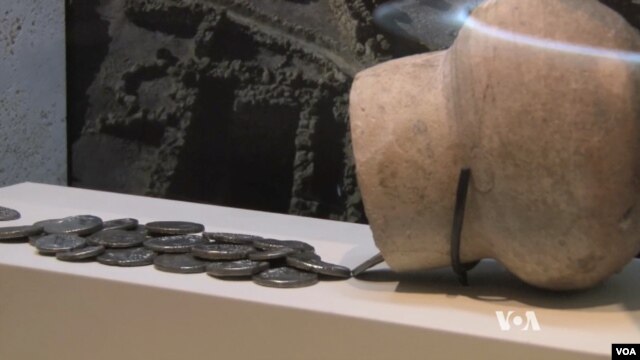
Many experts are still studying the Dead Sea Scrolls, says Debora Ben-Ami of the Israeli Antiquities Authority.
“We are showing a complete story, coming from the present, going back to the past, to a different time, to a different place, and then understanding all the context and all the importance of this history."
Ben-Ami says there are many questions that need to be answered. One of these questions is, who hid the scrolls? Scientists and scholars are still working to learn from these ancient documents.
I’m Jill Robbins.
Mike O’Sullivan reported this story for VOA News. Dr. Jill Robbins adapted it for Learning English. Hai Do was the editor.
Words in This Story
parchment - n. paper made from the skin of a sheep or goat
papyrus - n. paper made from papyrus, a tall plant that is like grass and that grows in marshes, that was used in ancient times
multi-spectral imaging - the capture of image data at specific frequencies across the electromagnetic spectrum
carbon 14 dating - determination of the age of objects of organic origin by measurement of their radiocarbon content.
dna analysis - the use of a DNA probe for the identification of an individual, as for the matching of genes
ritual - n. a formal ceremony or series of acts that is always performed in the same way
Now it’s your turn. What do you think of the Dead Sea Scroll exhibit? Would you like to see it? Are there similar ancient documents in your country? Write to us in the comments section.

